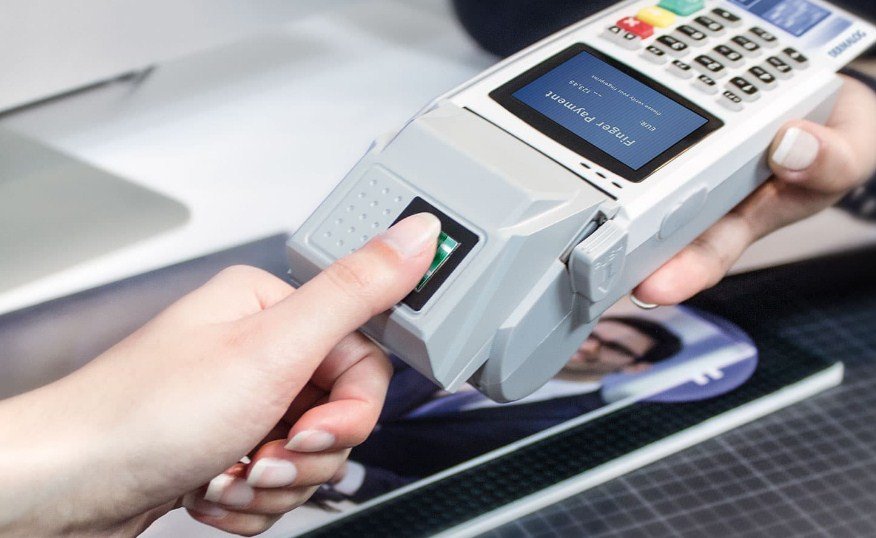Biometric banking wristband is a wearable device that allows users to make payments without carrying a wallet or a mobile phone. The device uses biometric authentication, such as fingerprint, facial recognition, or iris recognition, to identify the user and authorize the deduction of funds from a bank account. Biometric banking wristband is a secure and convenient payment method that is gaining popularity among consumers and retailers.
Biometric Banking Wristband Market Overview
According to a recent report by Allied Market Research, the global biometric banking wristband market is expected to reach USD 18.0 billion by 2032, growing at a compound annual growth rate (CAGR) of 15.80% from 2023 to 2032. The market is driven by the increase in adoption of cashless payments worldwide, the rise in demand for wearable devices due to safety and security during transactions, and the growth in convenience and better consumer experience.
The report segments the market by device type, technology, end user, and region. Based on device type, the market is divided into smartwatch, fitness tracker, payment wristband, and others. Based on technology, the market is categorized into near-field communication, capacitive sensors, optical sensors, thermal sensors, ultrasound sensors, electric field sensors, and others. Based on end user, the market is bifurcated into public sector banks and private sector banks. Geographically, the market is analyzed across North America, Europe, Asia-Pacific, and Latin America, Middle East & Africa (LAMEA).
Biometric Banking Wristband Benefits and Challenges
Biometric banking wristband offers several benefits for both consumers and retailers. For consumers, biometric banking wristband provides a fast and easy way to make payments without the hassle of carrying cash, cards, or phones. It also enhances the security and privacy of transactions, as biometric data is unique and difficult to steal or forge. Moreover, biometric banking wristband can also be used for other purposes, such as fitness tracking, health monitoring, and access control.
For retailers, biometric banking wristband can help to increase sales and customer loyalty, as it reduces the friction and time of checkout, improves the customer experience, and enables personalized offers and rewards. It can also lower the operational costs and risks associated with cash handling, card fraud, and chargebacks.
However, biometric banking wristband also faces some challenges that may hinder its adoption and growth. One of the main challenges is the high cost of wearable wristband devices, which may limit the affordability and accessibility for some consumers and retailers. Another challenge is the limited battery life of the devices, which may affect the reliability and convenience of the payment method. Furthermore, biometric banking wristband may also encounter some technical issues, such as compatibility, interoperability, and accuracy, as well as some regulatory and ethical issues, such as data protection, privacy, and consent.
Biometric Banking Wristband Key Players and Strategies
The global biometric banking wristband market is highly competitive and fragmented, with the presence of many players, both established and emerging. Some of the key players operating in the market include Alibaba Group, Apple Inc., Barclays Plc., Fitbit Inc., Google Inc., Jawbone, Mastercard, PayPal Inc., Samsung Electronics Co. Ltd., and Visa Inc. These companies have adopted various strategies, such as product launches, partnerships, collaborations, mergers and acquisitions, and joint ventures, to strengthen their foothold in the market and gain a competitive edge.
For instance, in June 2023, Mastercard and Visa announced a partnership to launch a biometric banking wristband that can be used for contactless payments at any terminal that accepts Mastercard or Visa cards. The wristband, called PayBand, uses a combination of fingerprint and heartbeat sensors to authenticate the user and authorize the payment. The wristband also has a display that shows the transaction amount and balance, as well as a button that can be used to pause or resume the payment function.
In April 2023, Fitbit and PayPal launched a biometric banking wristband that can be used for online and offline payments. The wristband, called FitPay, uses a capacitive sensor to scan the user’s fingerprint and link it to their PayPal account. The wristband also has a near-field communication chip that enables tap-and-go payments at any terminal that accepts PayPal. The wristband also tracks the user’s fitness and health data, such as steps, calories, heart rate, and sleep.
In March 2023, Samsung and Barclays launched a biometric banking wristband that can be used for peer-to-peer payments and ATM withdrawals. The wristband, called Samsung PayBand, uses an optical sensor to scan the user’s iris and link it to their Barclays account. The wristband also has a near-field communication chip that enables wireless payments to other Samsung PayBand users or to any terminal that accepts Samsung Pay. The wristband also monitors the user’s stress level and alerts them when they need to relax.
Biometric Banking Wristband Future Outlook
Biometric banking wristband is a novel and innovative payment method that has the potential to revolutionize the banking and financial services industry. As the technology advances and the consumer demand grows, biometric banking wristband is expected to become more widespread and mainstream in the near future. Biometric banking wristband is likely to offer more features and functionalities, such as voice recognition, gesture control, and biometric encryption, to enhance the security and convenience of the payment method.
Biometric banking wristband is also expected to integrate with other emerging technologies, such as blockchain, artificial intelligence, and big data, to enable more efficient and transparent transactions. Biometric banking wristband is also expected to create new opportunities and challenges for the stakeholders, such as consumers, retailers, banks, regulators, and developers, in the biometric banking wristband ecosystem.

